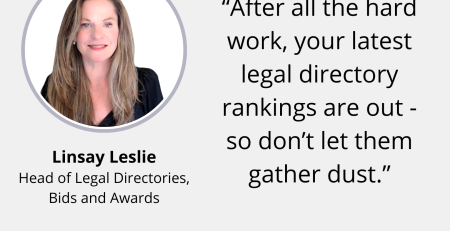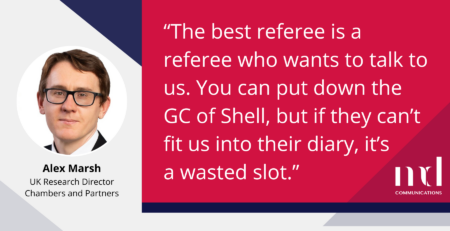Director of Content Anthony Notaras considers the current debate around ESG, and provides advice on the submission process for the Legal 500 Green Guide.
The underlying concept of ESG – a set of standards that pushes businesses and organisations towards greater improvements and transparency in their environmental, social and governance policies – really shouldn’t be that controversial. It benefits the environment, society and allows stakeholders – be they clients, investors, or potential employees – to better vet companies.
And yet, nearly 20 years after ESG entered the mainstream, in a 2004 ‘Who cares wins’ report backed by the United Nations, its application is facing increased pushback. Whether it’s investors withdrawing their money from ESG-friendly investment funds, US legislators voting against measures that support ESG investment criteria, or the ratings agency S&P ditching ESG number scores from its corporate credit ratings, the initial enthusiasm is waning.
Double standards
The backlash isn’t so much against the idea of ESG (although that exists in some political quarters), but more around the consistency in how its standards are measured, and to what end those measurements are used. Take the following two scenarios:
- an oil and gas company that exposes younger generations to toxic pollutants.
- a social media company that exposes younger generations to toxic content.
What objective criteria do ratings agencies use to judge which is worse? Fossil fuel companies, typically found smoking behind the bike sheds with the other ESG bad boys and girls (Guns, Gambling and, erm, Big Tobacco), might justifiably argue that the supposed squares, including Technology, receive a lighter touch.
A growing collection of former ESG darlings, undone by journalists who dug deeper than the ratings agencies, supports the suspicion that the more scientifically measurable E receives greater scrutiny than the S and the G. The latest high-profile clanger came when an ESG ratings agency gave ExxonMobil a lower ‘leadership and governance’ score than the cryptocurrency exchange FTX, which subsequently collapsed, with jailed former CEO Sam Bankman-Fried facing trial for fraud this October.
Legal ESG
The closest thing law firms have to ratings agencies are the legal directories. While Chambers and The Legal 500 have spent decades ranking firms on their advice and service, they don’t yet rank them on all their ESG credentials. Chambers has a Crisis and Risk Management guide, which includes an ESG section – although this ranks firms on the quality of their ESG-related advice to clients, rather than their own initiatives.
The closest approximation is the Legal 500 Green Guide, introduced in 2022, which recommends firms on the environmental sustainability of their work and internal practices, but not their social and governance standards (so forget copy and pasting that totally unrelated Chambers submission). This singular approach neatly sidesteps some of the broader ESG inconsistencies detailed above. For now, the most reliable barometer of a firm’s S and G values is found in RollonFriday’s below the line comments.
A green thumbs up from the Legal 500 brings obvious benefits. Not only does it provide additional external validation for clients, who are increasingly scrutinising their legal adviser’s ESG bona fides, it also helps establish an edge in the battle for talent – particularly younger graduates, lawyers, and support staff.
Do this, not that
The Green Guide submission process is similar to traditional Legal 500 categories (and by happy coincidence, the deadline for EMEA jurisdictions is 1 September), but some extra factors need to be considered:
- This isn’t the ‘Environment’ practice area category, which focuses on your expertise in environmental regulations, and where your clients can be sinners and saints. Your role advising a client’s bulldozing of a pristine rainforest to develop a mega-factory for coal-powered private jets could (theoretically) earn you a Tier 1 ranking for Environment. In the Green Guide, not so much.
- To avoid greenwashing, your submissions for other categories in the same jurisdiction will also be reviewed. Your Green Guide submission might be a haven of sustainability, but if your litigation submission boasts of defending a fossil fuel company in an oil spill-related claim, it could sink your chances of a ranking. If you are serious about getting a Green Guide ranking, you should consider the environmental impact of all your submitted work in that jurisdiction. A gentle nudge, perhaps, towards firms becoming more mindful of their ‘Advised emissions’.
- The Green Guide is jurisdiction specific. The Belgium office of an international firm won’t be adversely impacted by what the Houston office is doing unless its own lawyers are involved. Conversely, it can’t take credit for environmentally sustainable work done elsewhere.
- Everything is relative, and different jurisdictions will be held to different standards. A successful submission in Europe will be judged to a higher standard than from a country with less advanced technology and infrastructure, or a less supportive culture, economy, and politics.
- Whereas traditional Legal 500 categories focus more on partner-level work, the Green Guide also considers work or initiatives led by junior lawyers or non-legal staff, including in-house sustainability specialists.
- Data and evidence that chart progress from one year to the next are essential, particularly for internal law firm initiatives. Platitudes and fluff won’t cut it – as should be the case for all your directory submissions.
Law firms might groan at the prospect of another legal directory submission, but the Green Guide offers an efficient way to annually track the progress of the Environmental part of their ESG agenda. The emphasis being on progress, not perfection.
If you’d like support with your legal directory submissions, please get in touch.












